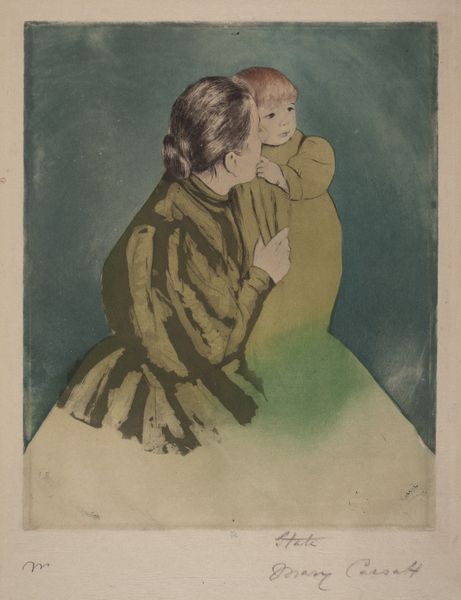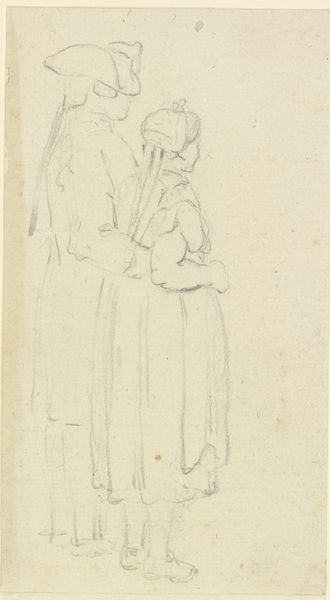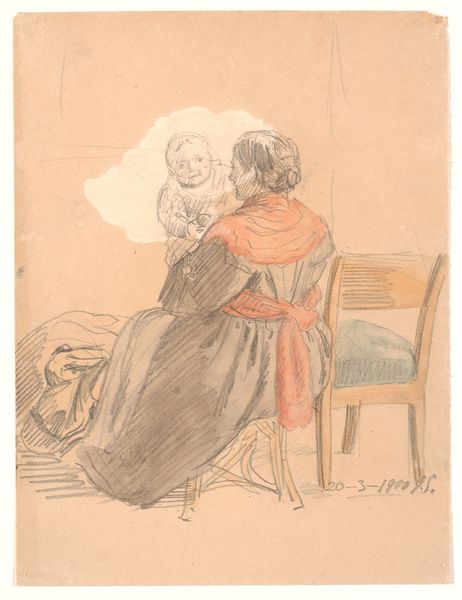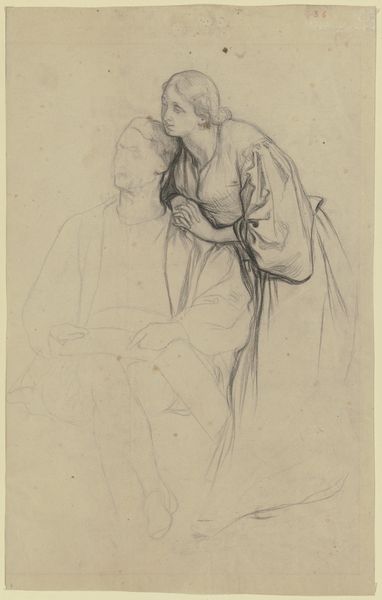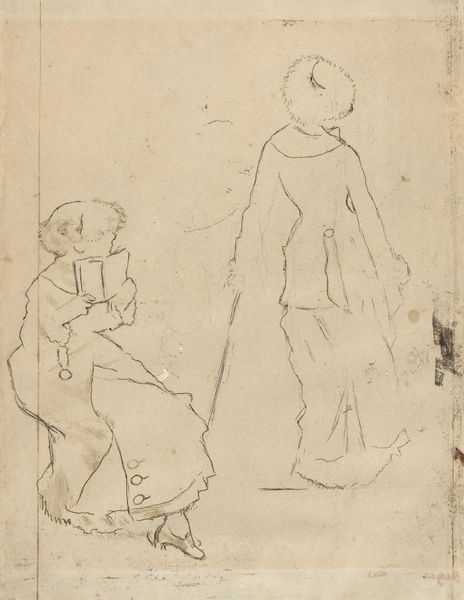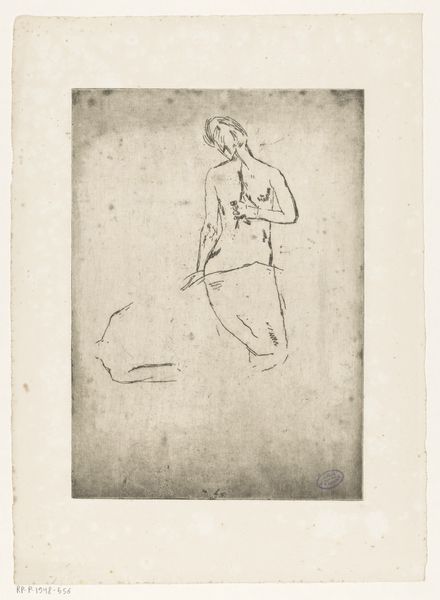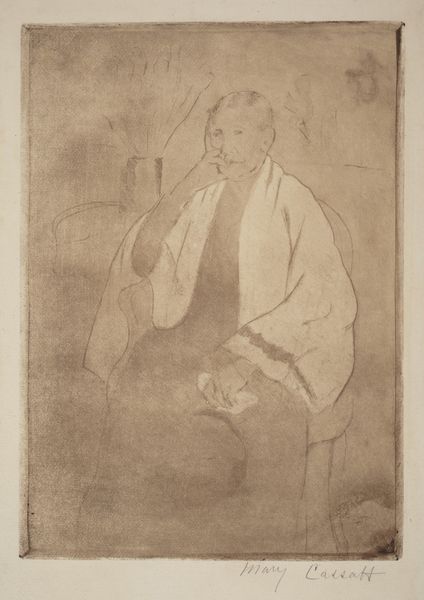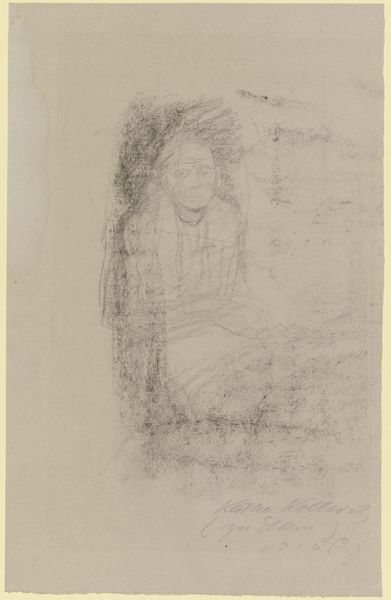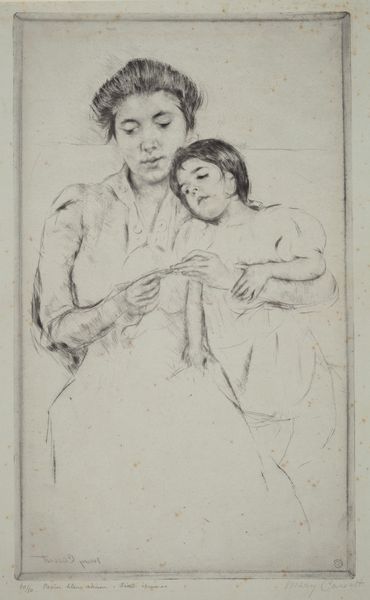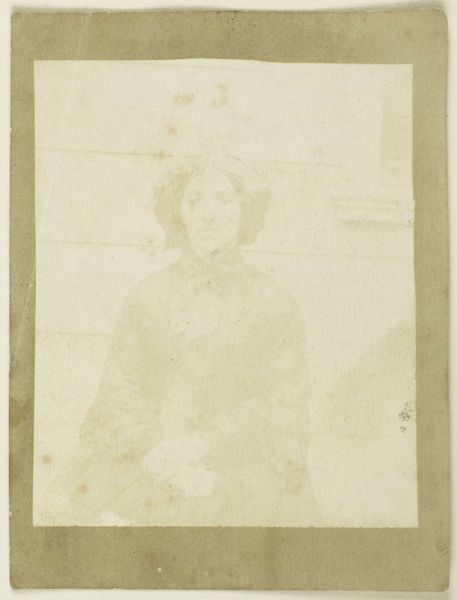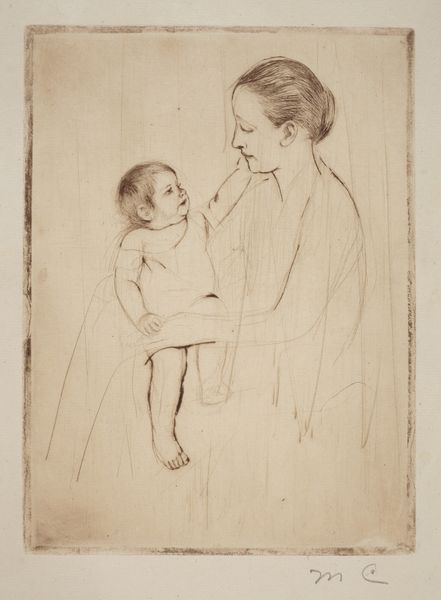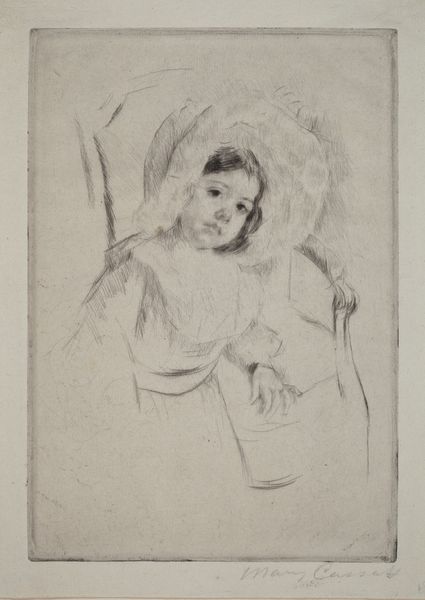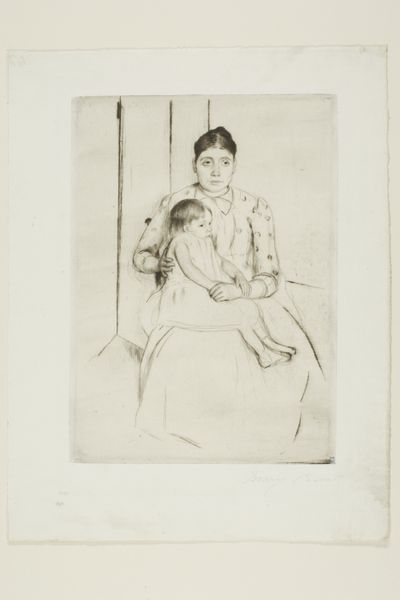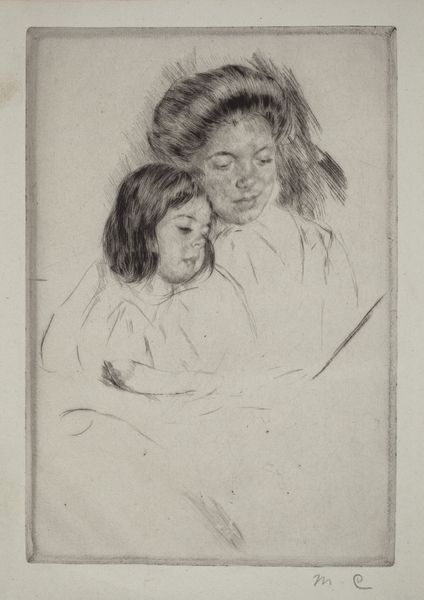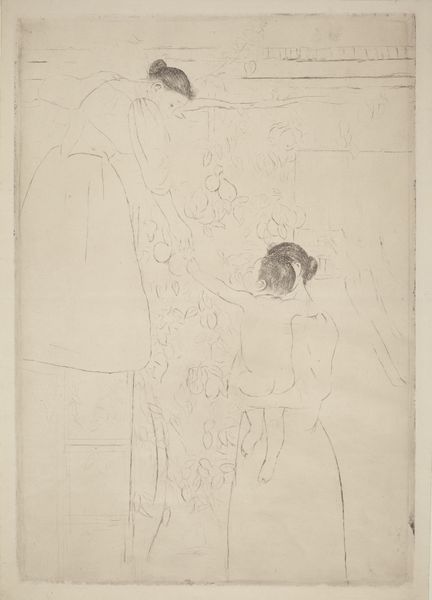
Dimensions: plate: 29.69 × 24.45 cm (11 11/16 × 9 5/8 in.) sheet: 41.9 x 31.8 cm (16 1/2 x 12 1/2 in.)
Copyright: National Gallery of Art: CC0 1.0
Curator: Ah, another quiet treasure! What are your immediate thoughts? Editor: Melancholy, tinged with warmth. Like a half-remembered dream of childhood comfort. It feels deliberately unfinished, too. Curator: That's an apt start. This is "Peasant Mother and Child," a print done in pencil around 1894 by the great Mary Cassatt. Notice the delicate interplay of lines, that's where the magic lies. It perfectly shows her ability to capture such tenderness through deceptively simple means. Editor: Indeed! Cassatt’s composition here hinges on what’s not present—the absent background concentrates our gaze entirely on the forms of the mother and child, which yields interesting commentary on figure/ground relationships. It reminds me of some subtle statements by Barthes about absences creating a more nuanced visual tension. Curator: Fascinating. What I get lost in are the details! It almost seems like she knew this woman. There’s so much tenderness but zero sentimental gush—a truly revolutionary approach for that era, and that subverts the standard trope in those days to deify motherhood above all other representations. Editor: And consider her impressionist leanings—it’s far from photorealism. The visible marks and sketchy textures contribute significantly to its intimate, almost fleeting nature. Is it simply a memory caught on paper? Curator: Precisely! Cassatt had a magical way of turning intimate scenes into reflections of broader, deeper, cultural experience. Look at other similar depictions; there's a universal recognition of those mother-child moments. The quiet joy and unbreakable bond transcend her work. Editor: Right. Viewing the mother's face from the rear—as you mention—shifts the narrative. Her features and emotion aren’t presented so explicitly to viewers. She may just be "mom" to this viewer... or even our mom? Which allows one’s memories to step into that intimate space! The entire construction pushes this into semiotic play. It goes further than simply a quaint study. Curator: What a perfect conclusion. Cassatt allows us all to become a part of the emotional landscape depicted. Editor: The more the artwork yields interpretation, the better the artist's strategy.
Comments
No comments
Be the first to comment and join the conversation on the ultimate creative platform.
